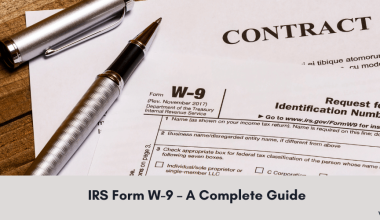In accounting, double-entry bookkeeping is a fundamental concept that forms the backbone of financial record-keeping. It is designed to provide a comprehensive and error-resistant approach to recording financial transactions. Despite its crucial role, many people find themselves confused by the complexities of this system.
Small business owners often struggle with fundamental accounting principles, underscoring the widespread challenges in understanding this system.
In this guide, we will cover the mechanics of double-entry accounting, explaining how it works and why it is so important.
What is Double-Entry Accounting?
It is a method of recording financial transactions that ensures the accounting equation remains balanced: Assets = Liabilities + Equity. This system is based on the principle that every transaction affects two accounts at least, with equal and opposite entries made to maintain balance.
In simpler terms, double-entry accounting requires a corresponding credit entry of equal value in one account for every debit entry made in another account. This dual-entry approach reflects the impact of transactions on a company’s financial position. For example, if a business purchases office supplies for $500 in cash, it will record a $500 debit to the Supplies account and a $500 credit to the Cash account.
The main advantage of double-entry accounting is to prevent errors and its role in providing a comprehensive view of a company’s financial status. This system helps track financial performance and prepare accurate financial statements (balance sheets and income statements). This method enhances accuracy and aids in detecting discrepancies and fraud.
You can also enlighten yourself with the concept of Accounting Automation. Such Accounting Trends are changing the landscape of the fast-growing Accounting Industry and making this easier and innovative.
Who Uses a Double-Entry Accounting System?
Double-entry accounting is widely employed across sectors due to its accuracy and reliability in financial reporting. It holds significant importance for:
-
Businesses
Nearly all businesses, regardless of their size, use double-entry accounting. Small businesses to large corporations rely on this system to track financial transactions, maintain accurate records, and prepare financial statements. It can provide a clear picture of the company’s financial health and helps make informed business decisions.
-
Accountants and Financial Professionals
Professional accountants and financial analysts use double-entry accounting to ensure accurate financial reporting and compliance with accounting standards. This system is integral in preparing financial statements, conducting audits, and providing financial advice.
-
Nonprofit Organizations
Nonprofits use double-entry accounting to manage donations, grants, and expenditures. This method helps them track funds efficiently and report their financial status transparently to stakeholders and regulatory bodies.
-
Government Agencies
Government entities also employ double-entry accounting to manage public funds, ensure transparency, and comply with regulatory requirements. It helps monitor expenditures and maintaining balanced budgets.
-
Educational Institutions
Schools and universities utilize double-entry accounting to manage tuition fees, grants, and other financial transactions.
If you want to go the traditional way, you can also read about CPA certification to navigate your way towards a career in the accounting industry.
What are the Common Double-Entry Accounting Rules?
Here are the most common rules of double-entry accounting:
- Every Transaction Affects Two Accounts
Each financial transaction must be recorded in at least two accounts. One account will be debited, and the other will be credited. This dual impact ensures that the accounting equation (Assets = Liabilities + Equity) remains balanced.
- Debits and Credits Must Balance
For every debit entry made, there must be an equal and opposite credit entry. This means the total amount of debits must always equal the total amount of credits in the accounting system, maintaining the balance of the books.
- Accounting Equation Must Remain Balanced
The core principle of double-entry accounting is that the accounting equation must always be in balance. This equation reflects that what a business owns (assets) must be funded by what it owes (liabilities) plus the owner’s investment (equity).
- Every Account Has a Normal Balance
Each account in double-entry accounting has a normal balance (either a debit or credit). For instance, asset accounts typically have a debit balance, while liability and equity accounts have a credit balance. Transactions are recorded according to these norms to ensure proper classification and balance.
- Accurate Record-Keeping Must Be Maintained
Every transaction should be documented with a detailed record, including the date, amount, and nature of the transaction. This helps track and verify the entries in the accounting system.
Different Types of Accounts in Double-Entry Accounting
In double-entry accounting, there are distinct types of accounts, each playing a specific role in recording financial transactions. These include:
-
Assets
Assets represent what a business owns and are divided into current and non-current categories. Current assets include cash, accounts receivable, and inventory, which are expected to be converted into cash or used up within a year. Non-current assets, like property, plant, and equipment, have a longer-term value. Assets typically have a debit balance.
-
Liabilities
Liabilities indicate what a business owes to external parties. They are also categorized into current and non-current liabilities. Current liabilities, like accounts payable and loans, are obligations due within a year. Non-current liabilities, such as long-term debt and mortgages, extend beyond a year. Liabilities generally have a credit balance.
-
Equity
Equity represents the owner’s interest in the business, calculated as assets minus liabilities. It includes common stock, retained earnings, and additional paid-in capital. Equity accounts reflect residual interest in the assets of the entity after deducting liabilities and typically have a credit balance.
-
Revenue
Revenue accounts track the income earned from the business’s primary activities, such as sales and service income. These accounts represent the inflow of economic benefits and have a credit balance.
-
Expenses
These accounts record the costs incurred in the process of generating revenue, including salaries, rent, and utilities. These accounts reflect the outflow of economic resources and have a debit balance.
-
Gains and Losses
Gains and losses represent the results of incidental transactions that are not part of regular operations, such as the sale of an asset or investments. Gains typically have a credit balance, while losses have a debit balance.
Read about Business Expenses to know better about profitability through efficient accounting.
Example of a Double-Entry Accounting
To illustrate how double-entry accounting works in practice, let’s consider a simple example of a business transaction.
Scenario: A company, ABC Ltd., purchases office equipment for $2,000 in cash.
Transaction Details:
- Office Equipment (Asset Account)
This account increases because the company now owns additional office equipment.
- Cash (Asset Account)
This account decreases because cash is used to pay for the equipment.
- Determine the Debit and Credit Entries
The Office Equipment account will be debited by $2,000 to reflect the increase in assets. The Cash account will be credited by $2,000 to show the decrease in cash.
In this transaction:
- The Office Equipment account is debited by $2,000, increasing the total value of office equipment on the balance sheet.
- The Cash account is credited by $2,000, reducing the cash balance on the balance sheet.
This example demonstrates how double-entry accounting ensures that the accounting equation remains balanced. The increase in one asset (Office Equipment) is offset by a decrease in another asset (Cash).
Single-Entry Vs. Double Entry Accounting: Comparison
| Parameter | Single-Entry Accounting | Double-Entry Accounting |
| Definition | A simple accounting system where each transaction is recorded once | A comprehensive system where each transaction affects at least two accounts |
| Complexity | Simple and straightforward | More complex and detailed |
| Usage | Suitable for small businesses with minimal transactions | Used by businesses of all sizes, especially those with more complex transactions |
| Accounts Involved | Primarily cash account | Involves multiple accounts (assets, liabilities, equity, revenue, expenses) |
| Accuracy | Prone to errors and lacks built-in error-checking | Provides built-in checks and balances, reducing errors |
| Financial Statements | Limited financial reporting capabilities | Enables comprehensive financial statements |
| Tracking | Basic tracking of income and expenses | Detailed tracking of financial position and performance |
| Detection of Fraud and Errors | Difficult to detect fraud and errors | Easier to detect discrepancies and prevent fraud |
| Regulatory Compliance | May not meet regulatory standards for larger businesses | Meets regulatory requirements and accounting standards |
| Decision Making | Provides limited information for decision-making | Offers detailed and accurate information for informed decisions |
Conclusion
Double-entry accounting system’s methodical approach to recording transactions provides built-in checks and balances that reduce errors and enhance reliability. By using this system, you can produce detailed financial statements and make informed financial decisions. Whether you’re a small business owner or a financial professional, mastering this accounting method can improve your ability to manage and report financial information effectively.













